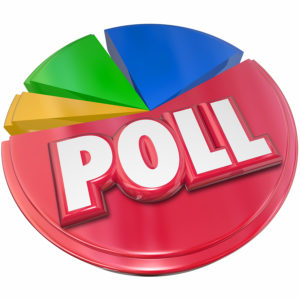Editor’s Note: For an alternative viewpoint, see Point: Yes, Polls Can Be Trusted, but the Devil Is in the Details
I spent a frustrating evening on the phone with a client recently, a candidate running for office in South Carolina. I explained why his campaign needs to begin polling now for a primary election that’s still eight months off. All I got in return was an earful of the usual gruff: Polling is unreliable. Polling can’t be trusted. Why waste money on polling? And so on and so on, a full hour’s worth.
We political strategists hear that a lot these days. It’s the lingering after-effect of 2016 when Donald Trump pulled off the biggest upset since Harry Truman won in a squeaker nearly 70 years earlier.
Trump’s unexpected victory severely rattled confidence in polling. But here’s the thing: the polls themselves weren’t to blame. It was how they were interpreted. Or, more accurately, misinterpreted.
Contrary to the way it appears, a presidential contest isn’t one big election where the candidate who receives the most votes wins. It’s actually 50 separate state elections held on the same day. Poll results must be interpreted within that framework rather than on a single national scale.
Then there’s the matter of methodology, of quality over quantity. Does the poll accurately reflect and sample the population the pollster is seeking to represent? That’s essential because, much like politics as a whole, polling is both an art and a science. Only polls that utilize the appropriate combination of the two can be trusted.
And even when unreliable polls are removed from the equation, there’s still the essential matter of correctly interpreting what the data actually tell us. Remember, polls aren’t always seeking to predict the winner of an election. And they’re certainly not magical crystal balls.
Rather, a poll is a snapshot capturing a specific moment in time. It shows what people were thinking at the precise moment the poll was taken. Even then, it contains several wild cards with the potential to seriously alter the campaign landscape in the blink of an eye. For example, a significant number of undecided voters could make up their mind a few days after polling is concluded, thus invalidating the earlier findings. Sometimes that even happens in a matter of hours rather than days.
Perhaps most important, it’s crucial to know at the outset what you want the poll to do. For instance, is its purpose to help predict the outcome of an election, or to guide messaging and track voter attitudes throughout the campaign? That’s an important distinction because while the two appear interconnected on the surface, they’re quite different in practice. I’d much rather myself, and our candidates, be armed with data over a prediction.
Finally, the general public loves obsessing about what are generically labeled “the polls” at the national level. Cable networks such as CNN, Fox, MSNBC and others breathlessly announce, “Look at this! Trump is trailing all leading Democratic contenders in a newly released national poll.” That’s gripping material for keeping viewers glued to the screen. But it doesn’t reflect what’s going on beneath the surface.
It behooves those of us who view politics under a microscope, such as political strategists and candidates on down-ballot races, to care more about what moves numbers rather than the daily horse race at the top of the ticket. Because that’s where polling is truly invaluable.
The right questions, asked the right way to the right targeted group of people, can provide a treasure trove of vital information. They reveal which specific issues the electorate truly cares most about. (And believe me, sometimes those results surprise even veteran campaign operatives.) They indicate how the electorate will respond to specific messaging, such as a campaign that’s driven by the candidate’s personal biography, or whether issues are more upfront and center in the current election cycle. How effectively a campaign applies that information then affects the head-to-head or “horse race” scenario at the top of the ticket.
But the challenging aspect of all this for both those of us who work in the political arena and for the general public that follows politics is 2016’s stain still clings to all polling, every aspect and at every level.
I say those who use that excuse to disregard the results of reliable polls do so at their own peril. And I didn’t need to consult a poll on it, either.

